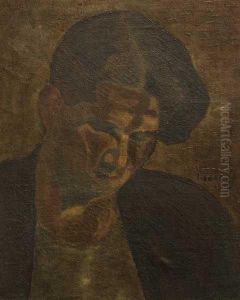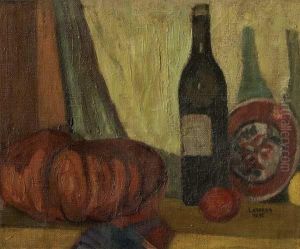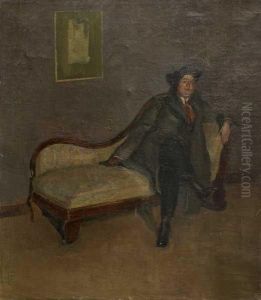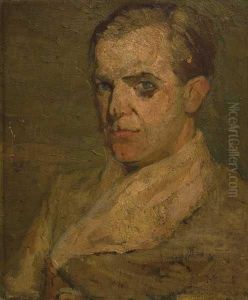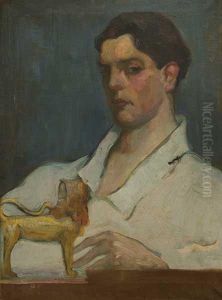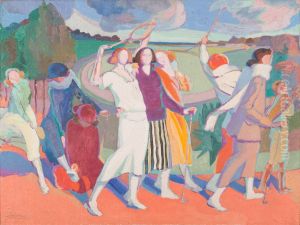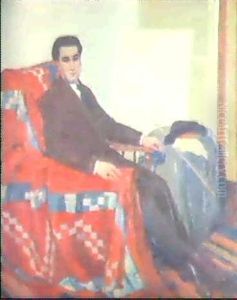Guillermo Laborde Paintings
Guillermo Laborde was an Uruguayan artist known for his contributions to early 20th-century Uruguayan painting. Born on January 1, 1886, in Montevideo, Uruguay, he grew up in a period when his country was experiencing cultural growth and a push towards modernization. Laborde studied at the Círculo de Bellas Artes in Montevideo, where he was influenced by European artistic movements and the teachings of prominent artists of the time.
Laborde's early work was characterized by an exploration of landscape and portraiture, following the academic traditions of the era. However, as his career progressed, he began to develop a more distinctive style that incorporated elements of Impressionism and Post-Impressionism, which were revolutionary in the Uruguayan context. His use of vibrant colors and dynamic brushstrokes reflected his interest in capturing the essence of his subjects rather than focusing on detailed realism.
Throughout his career, Laborde traveled extensively, which had a significant impact on his artistic development. He lived in Europe for several years, particularly in Spain and France, where he absorbed contemporary artistic trends and techniques. This European sojourn allowed him to engage with the works of the Old Masters and the modern painters alike, enriching his own visual language.
Upon returning to Uruguay, Laborde became an influential figure in the local art scene. He participated in various exhibitions and was recognized for his contribution to the renewal of Uruguayan painting. Laborde's works during this time often depicted the Uruguayan landscape and scenes of everyday life, capturing the unique atmosphere and light of his homeland.
Laborde also dedicated himself to teaching, passing on his knowledge and passion for art to the next generation of Uruguayan artists. He held educational positions and was involved in the formation of several art institutions in Uruguay, which played a crucial role in nurturing the country's artistic talent.
Guillermo Laborde's contribution to art extends beyond his paintings. His role as an educator and his active participation in cultural life helped shape the artistic identity of Uruguay in the early 20th century. Tragically, his life was cut short when he died on June 3, 1940, at the age of 54. Laborde's legacy, however, continues to be celebrated in Uruguay and by art historians who recognize him as a key figure in the development of modern Uruguayan art.
